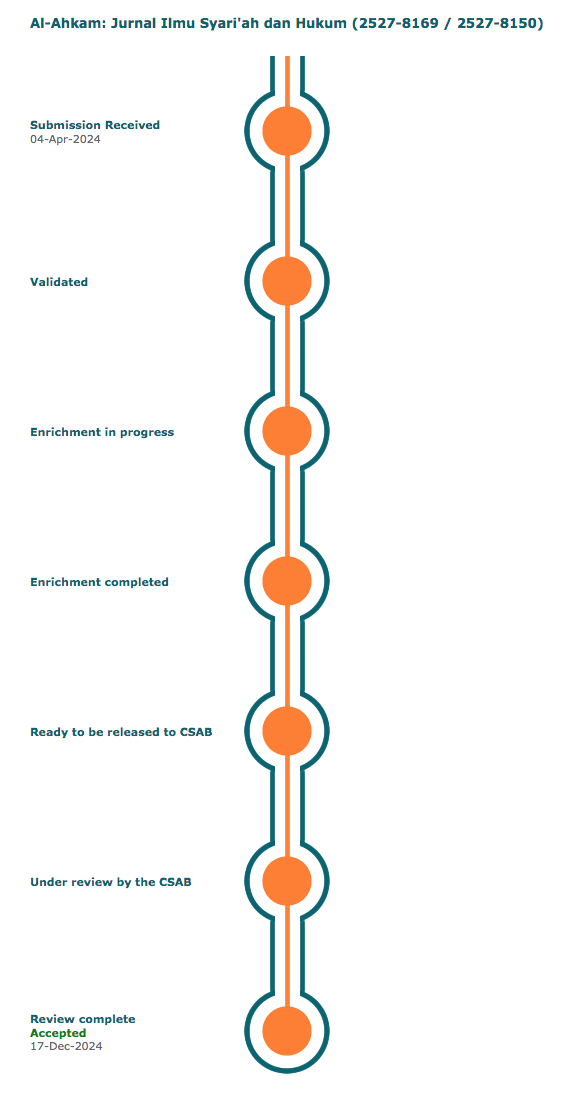Author Guidelines
Papers submitted for publication must conform to the following guidelines:
- Papers should discuss the focus and scope and written in English;
- Papers must be typed in one-half spaced on A4-paper size;
- Papers’ length is about 6,000-10,000 words (not including the references and bibliography);
- All submission must include a 150-200 word abstract;
- Full name(s) of the author(s) must be stated, along with his/her/their institution and complete address;
-
Keywords must be in between 3-7 key word phrase.
-
Paper format must follow the criterias:
Introduction: explains the theoretical background, related research, the practical applications and the nature and purpose of the article.
Literature Review: The literature review shows a “knowledge map” related to the topic of study, provides theories and concepts that can sharpen the analysis and relies on reputable journal articles published no later than the last 10 years.
Methods: describes research type, the participants, the materials and the procedures employed in the study such as treatment(s) and data analysis.
Results and Discussion: Results should be clear and concise. Discussion should explore the significance of the results of the work, not repeat them. A combined Results and Discussion section is often appropriate. Extensive citations and discussion of published literature should be avoided.
Conclusion: The main conclusions of the study may be presented in a short conclusions section, which may stand alone or form a subsection of a discussion or Results and discussion section.
References: References are listed in alphabetical order. Each listed reference is cited in text, and Non-research papers include major theme, logical development of the theme, author's point of view, implications, inferences, or conclusions.
- All submission should be in OpenOffice, Microsoft Word, RTF, or WordPerfect document file format;
- Arabic words should be transliterated according to the American Phsicological Assosiation (APA) style;
-
References of your manuscript must be up to date (in the last of 5 to 10 years and minimum of 30 references that 80% of the references is from primary sources/journal of international repute) and your reference can be accessed by anyone. Authors are responsible for ensuring that the information in each reference is complete and accurate. All references should be cited within the text; otherwise, these references will be automatically removed.
-
List of references alphabetically, chronologically, using Mendeley and choose American Phsicological Assosiation (APA) style 7th edition. For examples:
Brechin, J. (2013). A Study of the Use of Sharia Law in Religious Arbitration in the United Kingdom and the Concerns That This Raises for Human Rights. Ecclesiastical Law Journal, 15(3), 293–315. https://doi.org/10.1017/S0956618X13000434
Fadhli, A., & Warman, A. B. (2021). ‘Alasan Khawatir’ Pada Penetapan Hukum Dispensasi Kawin Di Pengadilan Agama Batusangkar ‘Reasons for Concern’ on Marriage Dispensation Decisions in Batusangkar Religious Court. Al-Ahwal, 14(2), 146–158. https://doi.org/10.14421/ahwal.2021.14203
Kamali, M. H. (2020). Actualization (Taf’il) of the Higher Purposes (Maqasid) of Shariah. International Institute of Advanced Islamic Studies (IAIS).
Nasution, K. (2005). Women’s Right in the Islamic Family Law of Indonesia. Unisia, 28(56), 192–204. https://doi.org/10.20885/unisia.vol28.iss56.art10
Smith, S. C. (2011). Crowdsourcing sharia: Digital fiqh and changing discourses of textual authority, individual reason, and social coercion. Georgetown University.
- Transliteration guidance (from Arabic to Latin)
Arabic romanization should be written to the transliteration system of the Library of Congress (LC) Guidelines.








